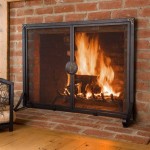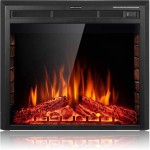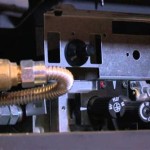How to Build an Indoor Fireplace: A Comprehensive Guide
Constructing an indoor fireplace represents a significant home improvement project demanding careful planning, adherence to building codes, and a thorough understanding of the necessary materials and techniques. A well-built fireplace can serve as a focal point in a living space, providing both aesthetic appeal and a source of supplemental heat. This article will outline the key steps involved in building an indoor fireplace, from initial planning to final construction.
Before embarking on the physical construction, a detailed plan is crucial. This plan should account for the following considerations: the location of the fireplace within the home, the type of fireplace to be built (masonry or prefabricated), the chimney design and placement, and adherence to local building codes and safety regulations. Failure to adequately plan can lead to costly errors and potential safety hazards.
Planning and Preparation
The initial planning phase necessitates a thorough assessment of the existing structure of the house. The location of the fireplace will influence the chimney's path, which must be clear of obstructions like electrical wiring, plumbing, and other structural elements. It's essential to consult with a structural engineer to ensure that the existing flooring and framing can support the weight of the fireplace, especially if a masonry fireplace is planned. Masonry fireplaces are considerably heavier than prefabricated units and may require additional structural reinforcement.
Furthermore, selecting the appropriate type of fireplace is a crucial decision. Masonry fireplaces, constructed from brick, stone, or concrete blocks, offer a traditional aesthetic and significant thermal mass, allowing them to retain heat for an extended period. However, they are labor-intensive and require skilled craftsmanship. Prefabricated fireplaces, often referred to as zero-clearance fireplaces, are manufactured units that can be installed more quickly and typically require less structural support. These units are available in a variety of styles and fuel options, including wood-burning, gas, and electric.
Building codes and safety regulations vary by location. It is imperative to obtain the necessary permits and approvals from local authorities before commencing any construction. These regulations will specify requirements for chimney height, clearances from combustible materials, and the use of fire-resistant materials. Failure to comply with building codes can result in fines, delays, and potentially hazardous conditions.
Construction of the Fireplace Structure
The construction process will vary depending on whether a masonry or prefabricated fireplace is chosen. For a masonry fireplace, the foundation is typically constructed from concrete, ensuring a level and stable base. The firebox, the area where the fire burns, is then built using firebricks, which are designed to withstand high temperatures. The firebox must be carefully constructed to ensure proper draft and efficient combustion. The smoke chamber, located above the firebox, is designed to funnel smoke into the chimney.
Prefabricated fireplaces are generally easier to install. The unit is typically placed on a non-combustible base, and the chimney system is connected according to the manufacturer's instructions. It is crucial to follow the manufacturer's specifications precisely to ensure safe and efficient operation. Zero-clearance fireplaces are designed to be installed directly against combustible walls, but it's vital to verify this specification in the manufacturer's documentation and local building codes.
Regardless of the type of fireplace, the chimney is a critical component. The chimney serves to vent smoke and combustion gases safely out of the home. The chimney must be constructed of fire-resistant materials and be properly sized to ensure adequate draft. The height of the chimney is also important; it must extend above the roofline and any nearby obstructions to prevent downdrafts. Flashing around the chimney at the roofline is essential to prevent water leaks.
Ensuring Safety and Proper Operation
Safety considerations are paramount throughout the entire construction process. Wear appropriate safety gear, including gloves, eye protection, and a dust mask, when working with masonry materials or installing prefabricated units. Ensure adequate ventilation when using adhesives or sealants.
After construction, a thorough inspection is essential. A professional chimney sweep or inspector can assess the fireplace and chimney for any defects or potential hazards. The inspector will check for proper clearances from combustible materials, the integrity of the chimney liner, and the overall structural stability of the fireplace. A smoke test can be performed to verify that the chimney is drafting correctly and that there are no leaks.
Regular maintenance is crucial for ensuring the long-term safety and efficiency of the fireplace. The chimney should be cleaned annually to remove creosote buildup, which is a flammable byproduct of burning wood. Inspect the firebox and chimney for any signs of damage, such as cracks or deterioration. Replace damaged firebricks or chimney liners promptly. Proper operation, including using seasoned firewood and avoiding overfiring, can help to prevent chimney fires and prolong the life of the fireplace.
Building an indoor fireplace is a complex project that requires careful planning, skilled labor, and adherence to safety regulations. By following these guidelines and consulting with qualified professionals, a homeowner can successfully build a fireplace that provides both warmth and aesthetic appeal for years to come.

How To Build An Indoor Fireplace The Constructor

How To Build An Indoor Fireplace The Constructor

How To Build A Indoor Fireplace Step By Simple Guideline

How To Build A Diy Built In Fireplace With An Electric Insert The Creative Mom

How To Build A Diy Stone Fireplace Boxwood Design Co

How To Build A Fireplace Red Cottage Chronicles

All About Build An Indoor Fireplace Civil Scoops

Building An Electric Fireplace With Brick Facade

How To Install A Freestanding Fireplace 5 Easy Steps L Esseiale

How To Build An Indoor Fireplace The Constructor
Related Posts








